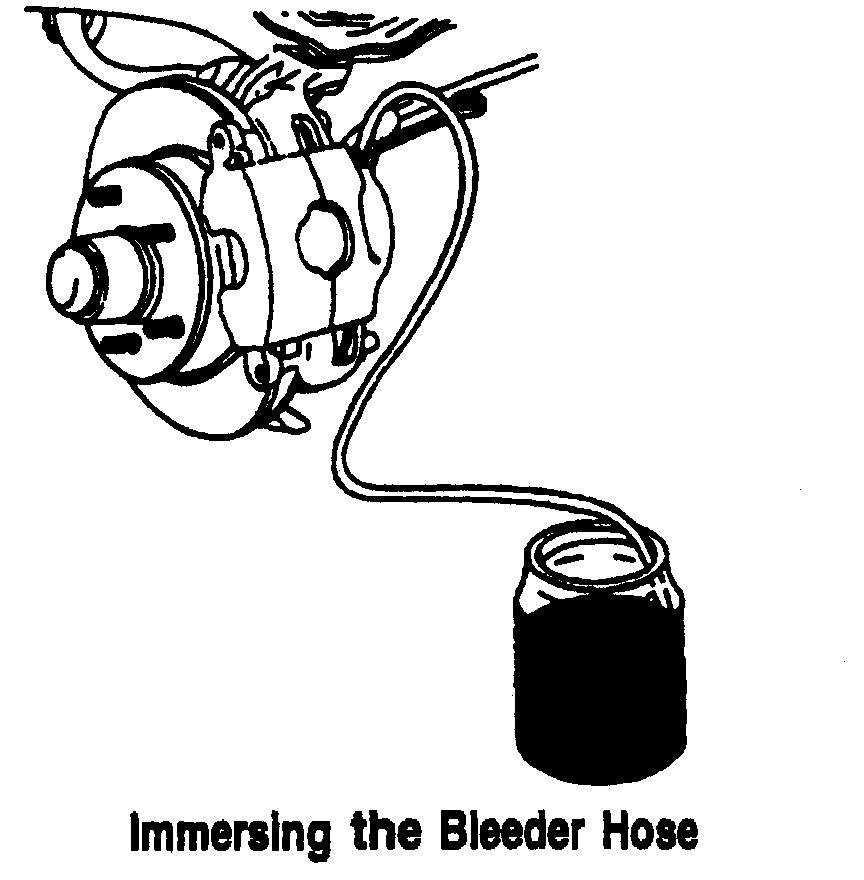Hi and thanks for using 2CarPros.
Did you bench bleed the new master cylinder? I am going to provide the directions for replacing the master cylinder and the directions for bleeding the entire system.
___________________________________________
Bleeding instructions for Master Cylinder:
This procedure can be performed with master cylinder on or off vehicle.
1. Disconnect brake lines at master cylinder, if necessary.
2. Connect suitable lengths of brake lines to master cylinder and immerse other ends of lines in master cylinder reservoirs.
3. Apply master cylinder pushrod or brake pedal with full strokes until air bubbles have disappeared in reservoirs. It may require 20-30 applications to fully eliminate air bubbles.
4. Remove bleeding lines from master cylinder, then install master cylinder on vehicle, if necessary, and connect brake lines.
It is not necessary to bleed entire hydraulic system after replacing master cylinder, providing master cylinder has been bled and filled during installation.
_____________________________________________
Here are the directions for bleeding with ABS. You will need two people for this.
TWO PERSON PROCEDURE (PREFERRED)
BLEEDING PROCEDURES
Important: Never pump the brake pedal. Fluid cavitation may occur.
NOTICE: Gravity and vacuum bleeding are not recommended for this ABS system.
Two Person Procedure (Preferred)
1. Raise the vehicle to gain access to the system bleed screws. Install clear tubing on the bleed screws so that air bubbles in the fluid can be seen.
2. Begin by bleeding the system at the right rear wheel, then the left rear, right front and left front.
3. Open one bleed screw at a time 1/2 to 1 full turn.
4. Slowly depress the brake pedal until it reaches its full travel and hold until the bleed screw has been tightened. Release the brake pedal and wait 10-15 seconds for the master cylinder to return to the home position.
Important: Repeat steps 1 through 4 until approximately 1 pint of brake fluid has been bled from each wheel. Clean brake fluid should be present at each of the wheel bleed screws. Check the master cylinder fluid level every 4 to 6 strokes of the brake pedal to avoid running the system dry.
5. If any component is replaced which may have caused air to enter the BPMV, use a Scan Tool to run "Function Test" four times while applying the brake pedal firmly.
Important: Set the park brake when running the "Function Test."
6. Rebleed all four wheels using steps 1 through 4 to remove the remaining air from the brake system.
7. Evaluate the brake pedal feel before attempting to drive the vehicle and rebleed as many times as necessary to obtain appropriate pedal feel.
_________________________________________
Bleeding process for non ABS : Pic 1 correlates with these directions.
MANUAL BLEEDING
BLEEDING BRAKE HYDRAULIC SYSTEM
Bleeding is necessary if air has entered the hydraulic brake system. It may be necessary to bleed the system at all four wheels if a low fluid level allowed the air to enter the system or the brake pipes have been disconnected at the master cylinder or combination valve. If a pipe is disconnected at one wheel, then bleed only that wheel.
The time required to bleed the hydraulic system when the master cylinder is removed can be reduced by bench bleeding the master cylinder before installing it on the vehicle.
Manual Bleeding
If the vehicle is equipped with a vacuum booster, relieve the vacuum reserve by applying the brakes several times with the engine off.
NOTICE: Brake fluid will damage electrical connections and painted surfaces. Use shop cloths, suitable containers, and fender covers to prevent the brake fluid from contacting these areas. Always re-seal and wipe off brake fluid containers to prevent spills.
Tools Required: J 28434 Wheel Cylinder Bleeder Wrench
1. Fill the master cylinder reservoir with Delco Supreme 11 Hydraulic Brake Fluid GM P/N 1052535 or an equivalent DOT 3 motor vehicle brake fluid.
Maintain the fluid level during bleeding.
2. If the master cylinder is suspected to have air in the bore, bleed it before any wheel cylinder or caliper.
A. Disconnect the forward brake pipe connection at the master cylinder.
B. Allow the brake fluid to flow from the connector port.
C. Connect the brake pipe but do not tighten.
D. Slowly apply the brake pedal and allow the air to bleed from the loose fitting.
E. Tighten the fitting before releasing the pedal.
F. Wait 15 seconds.
G. Repeat this sequence, including the 1 5-second wait, until all air is purged from the bore.
H. After all air has been removed from the forward connection, repeat this procedure for the rear pipe.
3. If the BPMV of the 4WAL system is replaced or suspected to have air trapped inside, it must be bled next.
4. Bleed each wheel in the following sequence:
A. Right rear.
B. Left rear.
C. Right front
D. Left front
5. Attach a hose to the wheel cylinder/caliper bleeder valve.
Immerse the opposite end of the hose into a container partially filled with clean brake fluid.
6. Slowly apply the brake pedal one time and hold.
7. Loosen the bleeder valve to purge the air from the wheel cylinder/caliper.
8. Tighten the bleeder valve to 13 Nm ( 110 lb. In. ) And slowly release the pedal.
9. Wait 15 seconds.
10. Repeat this sequence, including the 15-second wait until all air is purged from the wheel cylinder/caliper.
11. Repeat steps 5 through 10 at each wheel until the system is bled.
12. Check the brake pedal for "sponginess" and the brake warning lamp for an indication of unbalanced pressure. Repeat the bleeding procedure to correct either of these conditions.
____________________________________
If you have done this, let me know. Also, take a look at picture 2 and tell me which master cylinder type you have.
Take care,
Joe
Images (Click to make bigger)
Saturday, January 5th, 2019 AT 11:26 PM





